Strong demand for gold from central banks and institutional investors is expected to remain a key theme in 2025. With silver’s industrial and green energy uses, the outlook for both metals looks bright. Here are eight companies to watch.
Calibre Mining
Calibre Mining (TSX: CXB; US-OTC: CXBMF) is on the brink of production in Canada. It expects to pour first gold in this year’s second quarter at its Valentine gold mine in central region of Newfoundland and Labrador.
Once in production, Valentine will be the largest gold mine in Atlantic Canada. A December 2022 feasibility study outlined a conventional open pit mining and milling operation producing about 195,000 oz. gold annually during the first 12 years of Valentine’s 14.3-year mine life.
With mine construction nearly complete, the Vancouver-based company is planning the largest exploration drill program in the 250-sq.-km property’s history this year. Valentine consists of a series of mineralized deposits along the 32-km-long Valentine Lake Shear Zone (VLSX) where the company continues to report exploration success. Calibre describes the geologic setting at Valentine as similar to the Val-d’Or and Timmins camps in the Abitibi gold belt.
Last November, Calibre discovered broad widths of gold mineralization outside the resource at the Frank zone, about 1 km southwest of the mine’s Leprechaun pit. Results included 173 metres grading 2.43 grams gold per tonne, including 91 metres at 3.84 grams gold , starting from 271 metres downhole in FZ-24-048.
In total the Valentine project hosts 64.6 million measured and indicated tonnes grading 1.9 grams gold for 3.96 million contained oz. and another 20.8 million inferred tonnes at 1.65 grams gold for 1.1 million ounces.
The company last year produced 242,487 oz. gold at its El Limon and Libertad mines in Nicaragua and its Pan open pit mine in Nevada. It forecasts 2025 production between 230,000 and 280,000 ounces. Of those, the company estimates 200,000-250,000 oz. will come from Nicaragua and 30,000-40,000 oz. will come from Nevada.
Exploration efforts at the company’s assets in Nicaragua have been successful, too. Last year it reported high-grade results from the Talavera zone and the VTEM corridor at its Limon mine complex, 100 km northwest of the capital, Managua.
Calibre Mining has a market cap of C$2.1 billion.
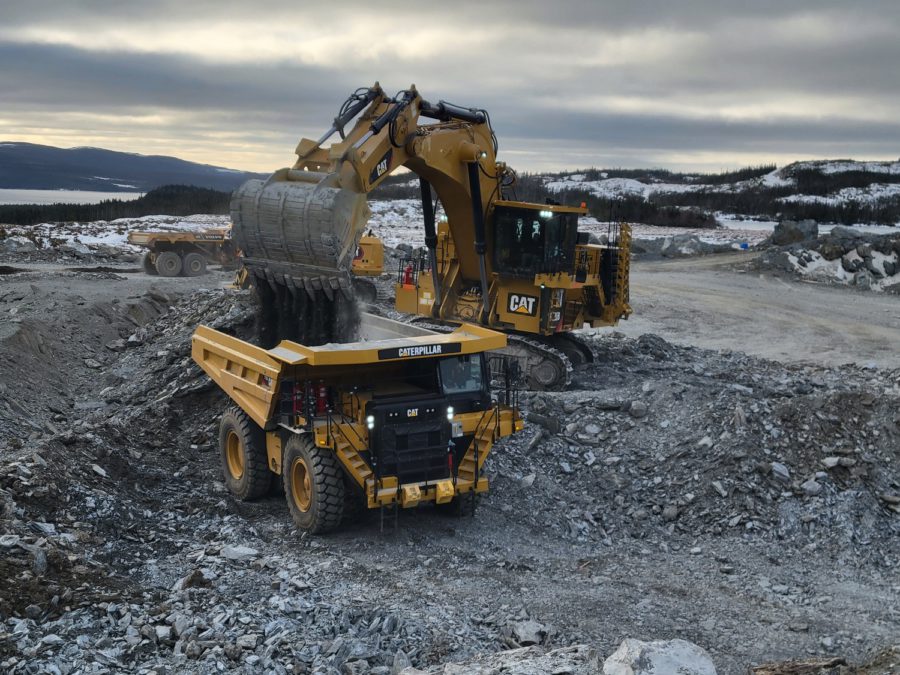
De Grey Mining
Last December De Grey Mining (ASX: DEG) and its flagship Hemi gold project in the Pilbara region of Western Australia received an all-share takeover offer from Northern Star Resources (ASX: NST) at a 37% premium to De Grey’s closing share price of A$1.52 (C$1.37) per share on Nov. 29.
Under the proposed transaction, Northern Star shareholders would own about 80.1% of the combined company and De Grey shareholders 19.9%. De Grey’s board unanimously supported the deal, and a shareholder vote will be held in April.
Hemi is one of the largest undeveloped gold projects in a tier-one mining jurisdiction and based on a feasibility study completed in September 2023 would produce about 530,000 oz. gold annually over its first 10 years and a total of 5.7 million oz. over 12 years.
The project, 85 km from Port Hedland, has probable reserves of 120.8 million tonnes grading 1.5 grams gold per tonne for 6 million oz. contained gold.
The company envisions mining the Brolga starter pit first, which contains probable reserves of 26.9 million tonnes grading 1.64 grams gold for 1.42 million ounces.
In mid-January, infill drill results from Brolga included 70 metres of 3.4 grams gold from 36 metres downhole in BRIN0212, including 18 metres of 6.6 grams gold. It also cut 36 metres grading 4.3 grams gold from 70 metres in BRIN0213, including 24 metres of 5.2 grams gold.
De Grey is assessing the potential of underground mining at Hemi where 2 million oz. of the project’s total resource is beneath the maximum depth for open pit mining (390 metres) outlined in the definitive feasibility study.
In late January, De Grey reported assays from drilling below the study’s pit design at the Eagle deposit, with highlights of 78.1 metres grading 7.9 grams gold from 457 metres downhole in drillhole HEDD347 and 24 metres of 5.1 grams gold from 425 metres depth in HEDD346.
De Grey is awaiting state and federal environmental approvals before making a final investment decision. Federal approval is anticipated in the first quarter and state approval in the fourth quarter.
The company believes there is vast exploration upside at the 1,500-sq.-km project.
De Grey Mining has a market cap of A$4.8 billion ($4.32 billion).
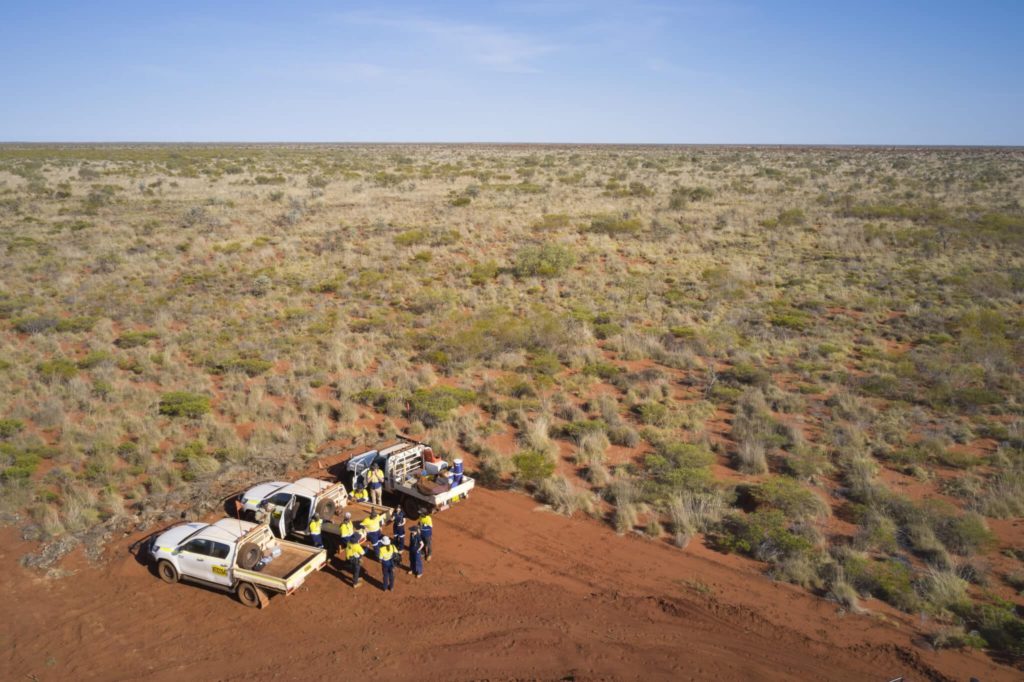
The Hemi project in Western Australia’s Pilbara region. Credit: De Grey Mining
Galiano Gold
Galiano Gold (TSX: GAU; NYSE: GAU) produced 115,115 oz. gold last year from its 90%-owned Asanko gold mine in Ghana and is forecasting production of 130,000 to 150,000 oz. gold this year.
The company closed 2024 with US$105 million ($C150 million) in cash and no debt and also managed to replace depleted ounces over the last two years with near-mine drilling. At the end of December, Asanko’s proven and probable reserves totalled 47.1 million tonnes grading 1.36 grams gold per tonne for 2.06 million contained ounces.
Asanko, in Ghana’s Asankrangwa gold belt about 250 km northwest of the country’s capital Accra, consists of four main open pit deposits—Abore, Nkran, Esaase and Miradani North—as well as multiple satellite deposits.
Exploration milestones last year included identifying a new mineralized system at its Akoma greenfield target about 5 km from Asanko’s carbon-in-leach processing plant; confirming a previously unknown shear zone with multiple gold intercepts at its Sky Gold B target; expanding reserves by 45% at its Abore deposit to 11.8 million tonnes grading 1.28 grams gold for 485,000 contained oz; and strong results at Midras South.
Definition drilling at Midras South returned intercepts including 27 metres grading 2.64 grams gold from 13 metres in drillhole MSRC24-352; 21 metres of 3.07 grams from 50 metres in hole MSRC24-302; and 7 metres at 88.33 grams from 3 metres in hole MSRC24-370. Galiano is on track to release its first reserve estimate for Midras South this year.
Highlights from Akoma included 6 metres grading 6.96 grams gold from 40 metres in hole T3RC24-004 and 16 metres averaging 3.57 grams from 68 metres.
The company has earmarked $10 million for exploration in 2025 featuring 17,000 metres of drilling, ground geophysics and regional prospecting and mapping.
A major pit wall pushback at the Nkran pit is also planned to start by mid-year and will enable the company to access high-grade ore at depth.
Galiano Gold has a Toronto market cap of about $445 million.

Goldshore Resources
Goldshore Resources (TSXV: GSHR; US-OTC: GSHRF) plans to deliver a preliminary economic assessment (PEA) in the first quarter of this year for its Moss Lake gold project in northwestern Ontario, about 100 km west of Thunder Bay.
In January it reported the first assay results from its 15,000-metre winter drill program targeting resource expansion in the top 200 metres from surface within the conceptual open-pit.
The first hole drilled into the Southwest Zone under Snodgrass Lake returned 2 metres grading 8.61 grams gold per tonne from 27 metres in drill hole MMD-24-133 and 32.3 metres of 1.73 grams from 42.7 metres downhole, including 16.3 metres of 2.95 grams. The second hole cut 21.9 metres of 0.66 gram from 4.5 metres, including 7.75 metres of 1.36 grams in drillhole MMD-24-134.
Moss Lake hosts 39 million indicated tonnes grading 1.23 grams gold per tonne for 1.5 million contained oz. and another 146.2 million inferred tonnes grading 1.11 grams for 5.2 million ounces.
Goldshore estimates that the resource encompasses 3.6 km of the 35-plus km mineralized trend, and remains open at depth and along strike. About 91% of the gold ounces defined in the resource are within the open-pit portion of Moss Lake.
Its exploration program this year includes geochemical and geophysical activities to delineate future targets along the project’s 23-km cumulative strike and within high-priority structural corridors surrounding the deposit.
Goldshore has invested over $60 million of new capital and completed about 80,000 metres of drilling on the project. Previous owners drilled a total of 235,000 metres at the project.
Moss Lake has direct access to the Trans-Canada Highway and hydro-electric power.
Goldshore Resources has a Toronto market cap of $82 million.
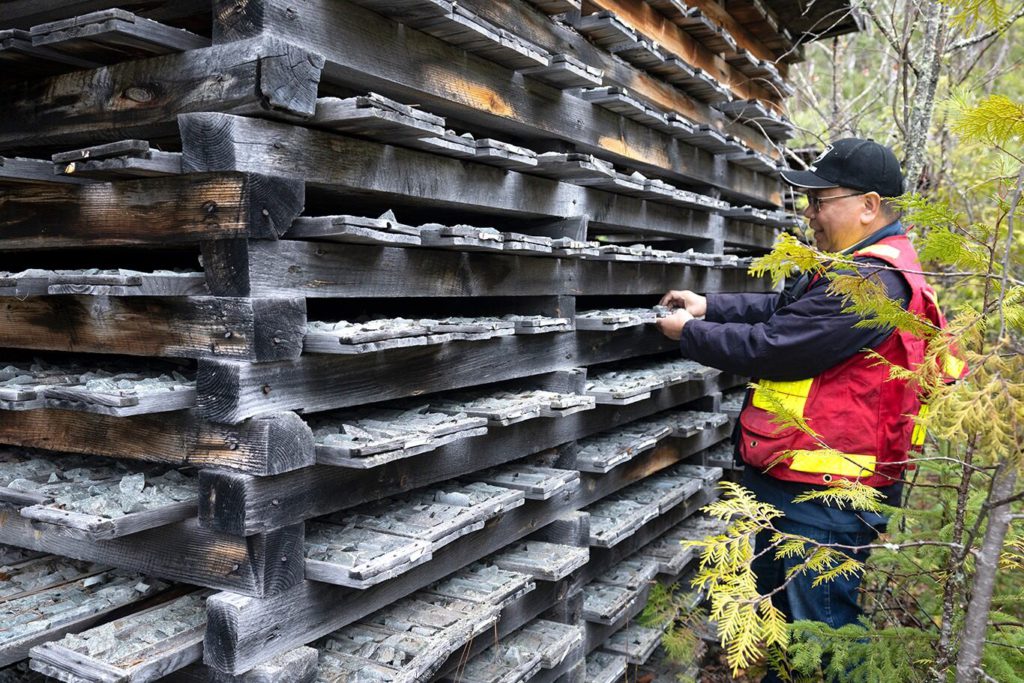
Sample trays at the Moss Lake gold project in northwestern Ontario. Credit: Goldshore Resources
New Found Gold
New Found Gold (TSXV: NFG; NYSE-AM: NFGC) plans to complete an initial resource estimate and PEA in the second quarter of this year for its Queensway project, 15 km west of Gander, N.L.
The company is in the midst of a 650,000-metre drill program and since it acquired the project in 2016, has made numerous discoveries that have evolved into significant mineralized zones.
Results last October from 10 deep diamond drill holes at Queensway targeting depth extensions of gold mineralization along the Appleton Fault Zone included 7.45 metres grading 9.51 grams gold from 482 metres downhole in drill hole NFGC-24-2158, including 0.7 metre of 27.78 grams and 2.15 metres of 343.1 grams in the Golden Dome Zone; and 4.84 metres at 13.7 grams from 562 metres in NFGC-24-135, including 1.5 metres of 40.6 grams in the Keats-AFZ Zone.
Drill hole 23-1268 cut 2.45 metres at 1.96 grams from 1,046 metres depth and 2 metres of 2.9 grams from 1,061 metres depth in the Iceberg-AFZ Deep Zone.
New Found Gold doubled its strike length along the Appleton Fault to over 20 km last April with the acquisition of LabGold’s (TSXV: LAB; US-OTC: NKOSF) Kingsway project, which adjoins the northern boundary of Queensway.
The company released results from the first six drill holes at Kingsway last October with highlights of 4.45 metres grading 10.4 grams gold per tonne from 219 metres downhole in NFGC-24-2153, including 0.8 metre of 35.2 grams and 2.1 metres of 104.6 grams in the Pistachio Zone. Drill hole NFGC-24-2119 cut 6.15 metres of 5.2 grams gold from 160 metres, including 0.65 metre of 15.3 grams in the Honeypot Zone; and NFGC-24-2144 returned 2 metres of 36.7 grams starting from 56 metres in the Jackpot Zone.
New Found Gold has a Toronto market cap of $469 million.
Disclaimer: The Northern Miner Group, which holds Mining.com, The Northern Miner and Canadian Mining Journal, is owned by EarthLabs, whose chairman and CEO, Denis Laviolette, is the former president of New Found Gold.
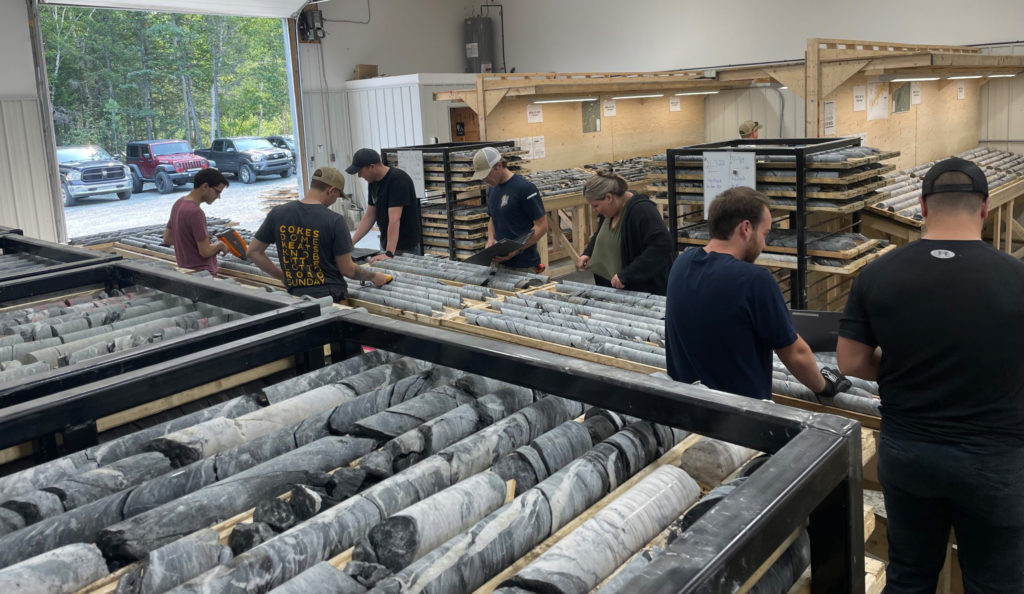
The New Found Gold core shack at the Queensway project. Credit: New Found Gold
Lundin Mining
In mid-January, Lundin Mining (TSX: LUN) and BHP Investments Canada, a subsidiary of BHP (NYSE, LSE, ASX: BHP), completed the $4-billion acquisition (cash and shares) of Filo Corp. and its Filo del Sol copper-gold-silver project, which straddles the Argentina-Chile border.
The two companies will jointly hold the project in a 50:50 joint venture company called Vicuña Corp. Lundin will contribute its Josemaria project, 10 km away from Filo del Sol, to the joint venture.
The tie-up is targeting a new resource estimate for Filo del Sol and an update to the estimate at Josemaria within the first half of 2025. The resource estimates will form the basis of a technical report outlining an integrated project and a development plan for construction.
The workplan this year will include drilling Filo del Sol, mine planning, metallurgy, hydrology wells and studies, and the commencement of access road construction.
In parallel, engineering studies and trade-off analyses will be completed in preparation for future permitting.
Filo del Sol, in Argentina’s San Juan province and adjacent Region III Chile, is about 140 km southeast of the Chilean city of Copiapo.
It is a high-sulphidation epithermal copper-gold-silver deposit associated with a large porphyry copper-gold system and the project encompasses a large alteration zone within the Vicuña district. The upper part of the Filo del Sol deposit is oxidized and was part of a 2023 feasibility study, but an economic study has yet to be done on the larger sulphide copper-gold mineralization below the oxidized cap.
A 2023 estimate of Filo del Sol’s oxide and sulphide resource outlined 432.6 million indicated tonnes grading 0.33% copper, 0.33 gram gold per tonne and 11.5 grams silver for contained metal of about 3.16 billion lb. copper, 4.63 million oz. gold and 106,380 oz. silver. Inferred resources add 211.6 million tonnes averaging 0.27% copper, 0.31 gram gold and 7.4 grams silver for 1.3 billion lb. copper, 2.1 million oz. gold and 50,330 oz. silver.
Last year Lundin produced 369,067 tonnes copper, 191,704 tonnes zinc, 158,436 oz. gold and 7,486 tonnes nickel.
In other news, the company said last December that it plans to sell its Neves-Corvo operation in Portugal and Zinkgruvan operation in Sweden to Boliden for up to US$1.52 billion.
Lundin Mining has a market cap of $10.2 billion.

The Filo del Sol project. Credit: Lundin Mining
Rupert Resources
Rupert Resources (TSXV: RUP; US-OTC: RUPRF) expects to finish a prefeasibility study on its Ikkari discovery in northern Finland before the end of the first quarter and to submit an environmental impact assessment report in this year’s second half.
Ikkari has open pit and underground resources of 58.4 million indicated tonnes grading 2.18 grams gold per tonne for 4.19 million oz. contained gold and another 3.58 million inferred tonnes grading 1.18 grams for 136,000 oz. The 2023 resource used a cut-off grade of 0.4 gram for mineralization mineable by open pit and 0.9 gram for mineralization extractable from underground.
Last year, scout drilling confirmed the same ultramafic and sedimentary units that host the Ikkari deposit up to 15 km to the east. And an induced polarization survey to identify areas at depth that demonstrate a similar structural setting to Ikkari also identified several locations to be prioritized for drill testing this year.
In addition, exploration is to target Heinä South, about 1 km from Ikkari, where previous drilling cut 25 metres grading 16.5 grams gold starting 83 metres downhole in drill hole 124019 and 24.4 metres of 10.5 grams per tonne from 61 metres, including 2 metres of 112.5 grams in drill hole 124061.
A bulk sample last year demonstrated 96.4% gold recovery from a head grade of 1.99 grams gold including a significant gravity recoverable gold component.
Ikkari—part of the company’s Lapland project that includes the historic Pahtavaara mine and a working mill — is 40 km from the town of Sodankylä and 9 km from a 220 kilovolt power transformer substation.
A PEA in November 2022 outlined a 22-year mine life (open pit for the first 11 years with the transition to underground in year 10) producing 4.25 million oz. gold over the mine life, or an average of 220,000 oz. a year. The study estimated an after-tax net present value (at a 5% discount rate) of $1.6 billion (C$2.29 billion). Instead of an after-tax internal rate of return (IRR), the PEA provided an unlevered IRR of 46%, or the expected rate of return on investment if there are no financings.
Rupert Resources has a Toronto market cap of $981.6 million.
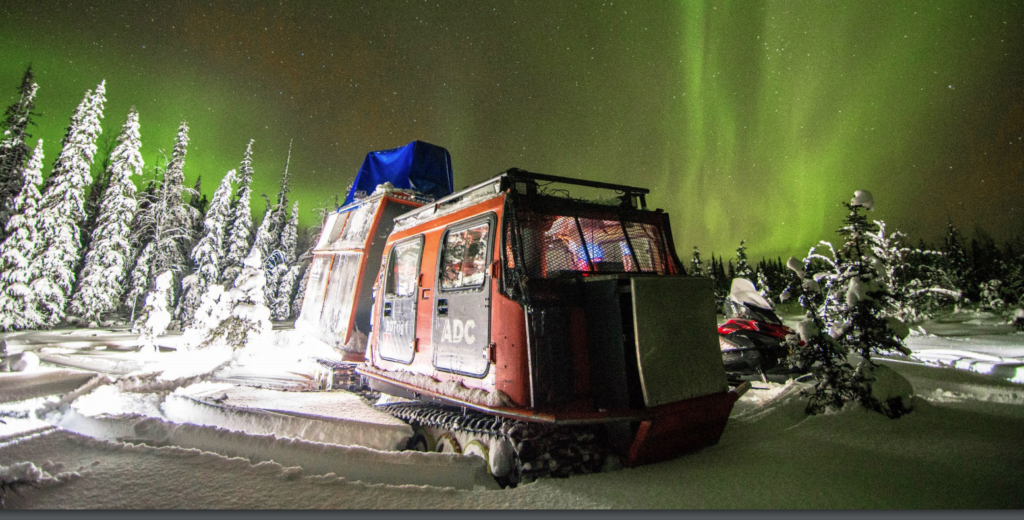
The Ikkari project in northern Finland. Credit: Rupert Resources
Vizsla Silver Corp.
Vizsla Silver (TSX: VZLA; NYSE: VZLA) plans to publish a feasibility study in the second half of this year for its Panuco silver-gold project in Mexico and is targeting first silver production in the second half of 2027. The project, near the port city of Mazatlán in southern Sinaloa state, is 80 km from First Majestic Silver’s (TSX, NYSE: AG) San Dimas mine.
In January, Vizsla updated the Panuco resource estimate for the fourth time, outlining nearly13 million measured and indicated tonnes grading 307 grams silver, 2.49 grams gold, 0.27% lead and 0.85% zinc (534 grams silver-equivalent per tonne) for 222.4 million silver-equivalent ounces. Inferred resources stand at 10.5 million tonnes grading 219 grams silver, 1.96 grams gold, 0.30% lead and 1.01% zinc (412 grams silver-equivalent) for 138.7 million silver-equivalent ounces. A 150-grams silver-equivalent per tonne cut-off grade was used.
The updated resource was centred on the western portion of Panuco, encompassing about 8.6 km of the known 86 km of cumulative vein strike in the district. The estimate was based on a total drill database of 979 holes (372,685 metres), which Vizsla Silver has drilled since November 2019.
A PEA last July envisioned an initial mine life of 10.6 years producing 15.2 million silver-equivalent oz. a year, with an after-tax net present value (at a 5% discount rate) of $1.1 billion (C$1.57 billion) and internal rate of return of 86%. Initial capex of $224 million could be repaid in nine months.
The bulk of Panuco’s measured resource is located at Copala, where the company has broken ground on a bulk sample test mine that will support mine planning for the feasibility study and development for the project’s first stage.
A 10,000-metre drill program with two rigs is also underway to test priority targets in the central and eastern areas of the district.
Last year the company tripled its land package to more than 170 sq. km.
Vizsla Silver has a Toronto market cap of about $828 million.
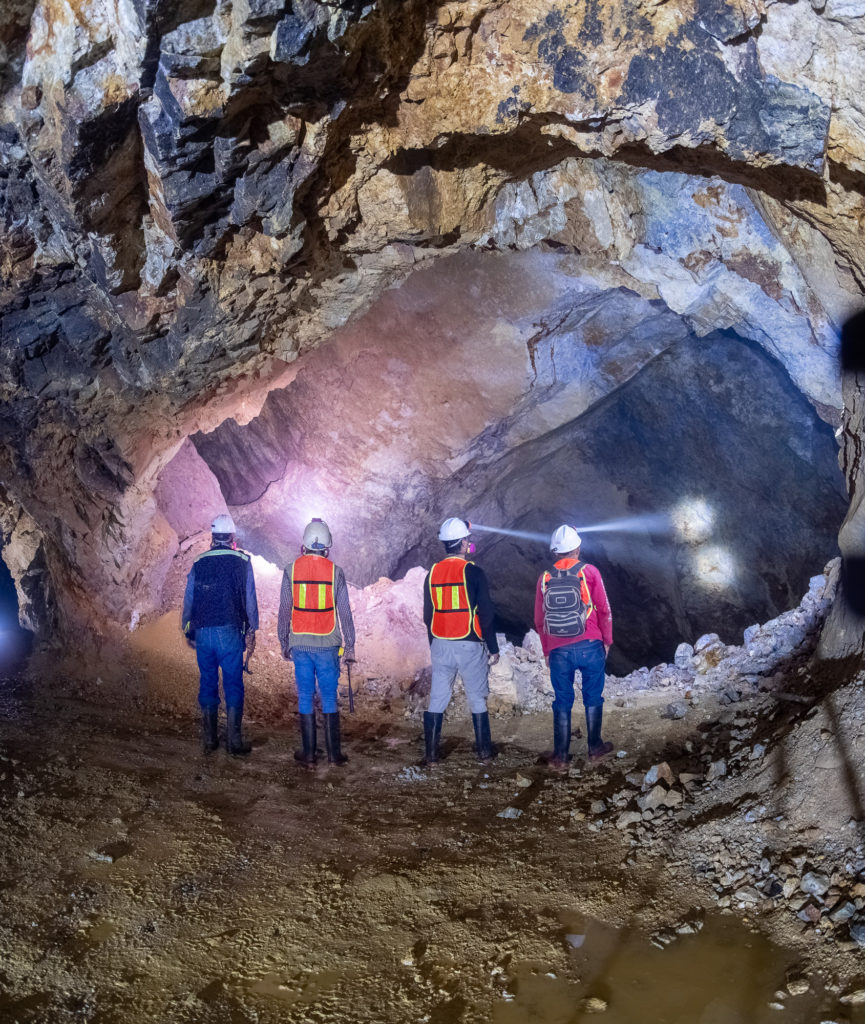
The Panuco project in Mexico. Credit: Vizsla Silver

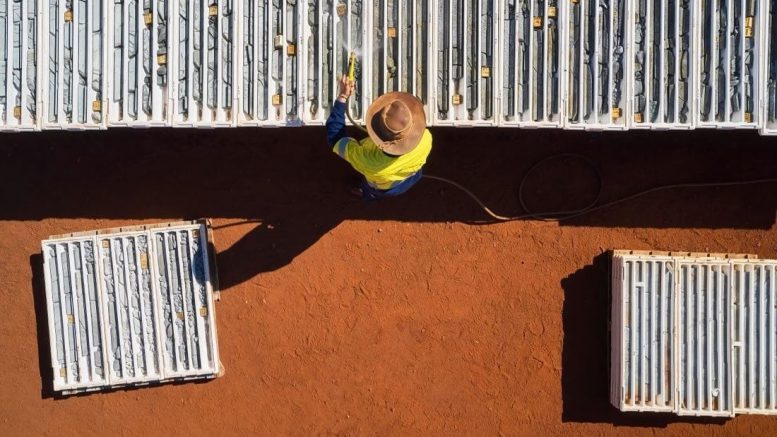
Be the first to comment on "Spotlight: Precious metals companies"